Mustard seeds are tiny pungent seeds, most commonly used in South Asian dishes and to manufacture mustard. Ground mustard seeds are mixed with water, vinegar, or wine along with a variety of additional seasonings and flavorings to create prepared mustard. While mustard plant species are numerous, three are primarily employed for culinary purposes - white, brown, and black.
White, brown, and a mix of white and brown mustard seeds are used to make American yellow mustard, French Dijon-style mustard, and British yellow mustard, respectively. Black mustard seeds are often used whole in Indian cuisine. If you don’t have a specific need for mustard seeds, you likely won't keep them in your pantry, except if you like to make homemade mustard.
There aren't many recipes that call for ground mustard powder, so many of the recipes you find will probably work just fine with premade mustard. Nevertheless, if you find a recipe that uses them, below are numerous mustard seed substitute ideas which you probably do stock in your pantry.
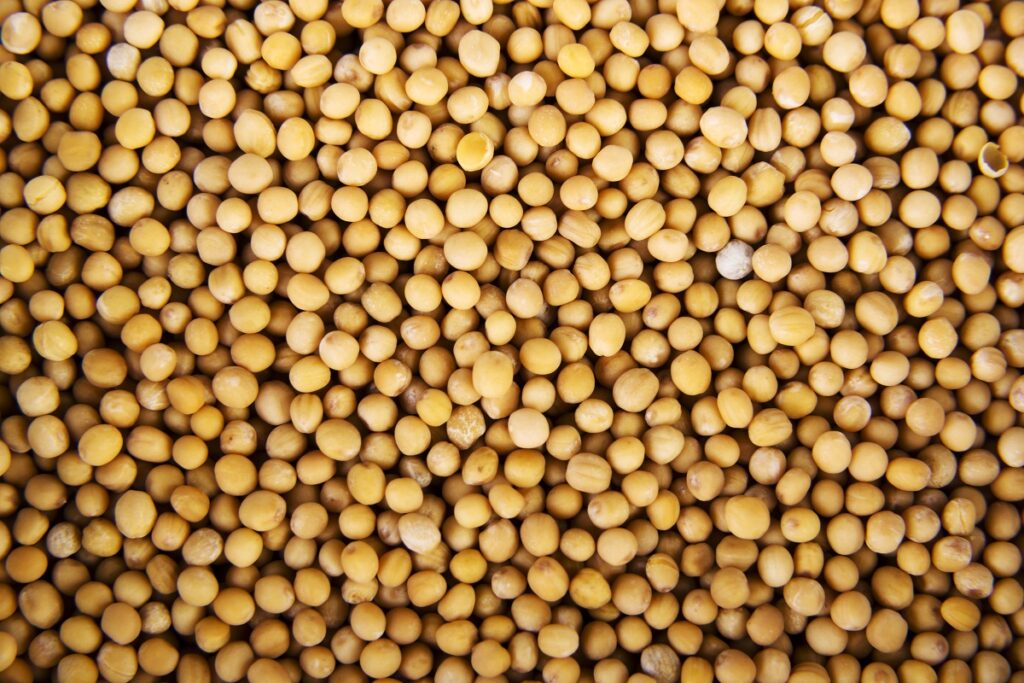
Jump To
What are Mustard Seeds?
Mustard seeds are the little round, odorless seeds of the mustard plant, belonging to the plant family Brassicaceae. It belongs to the same genus as cabbage and turnips, and is an annual plant. All parts of it, including the seeds, leaves, and flowers, are edible.
There are numerous species of mustard plants, but only three are frequently used in cooking: white or yellow (Sinapis alba), brown mustard (Brassica juncea), and black mustard seeds (Brassica nigra). White mustard seeds are used to make yellow mustard, usually with the addition of turmeric or pigment to achieve a vibrant yellow. Of Mediterranean origin, these light tan seeds are slightly bigger than other mustard seeds, and come from the white mustard plant.
The fact that the white mustard plant can be grown in both cooler and warmer climes may account for some of its popularity. White mustard seeds contain intense flavors, especially sinalbin, which is the most mellow of the three. As opposed to brown and black seeds, which send heat up the nose, their heat primarily lingers on the tongue, and lingers less.
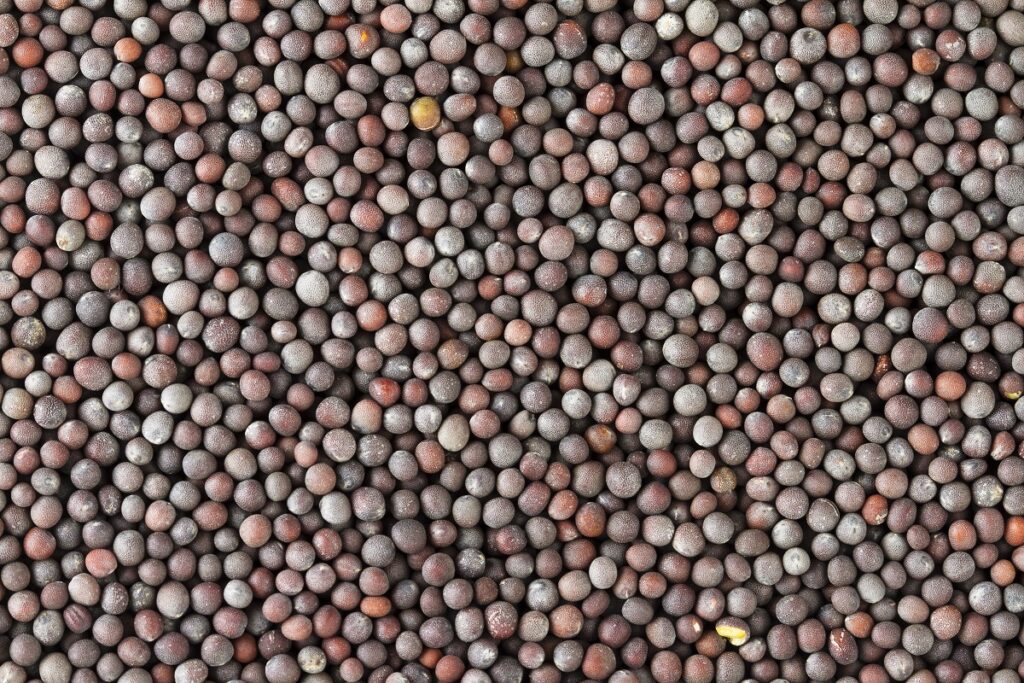
Brown vs. Black Mustard Seeds
Brown mustard seeds, commonly referred to as Indian or Chinese mustard, come in a variety of colors from dark brown to dark yellow. Of Himalayan origin, subsequently brought to India and China, brown mustard is used for a stronger bite, and often found mixed with yellow seeds in whole-grain style mustard. Chinese hot mustard powder is simply ground brown mustard seeds without any additional spice.
In culinary applications, brown mustard is often used in sauces, as they’re milder than black and spicier than white mustard seeds. The most potent of the three, but least popular, are black mustard seeds. A native of Southern Mediterranean regions, this spice was widely used in ancient civilizations of Egypt, Greece, Babylonia, India, and China.
Black mustard seeds are indigenous to portions of Asia, the Middle East, Europe, and North Africa. They can be used whole or powdered into a spice, and are frequently added to hot oil to enhance flavor in curries, stews, and sauces. These are the strongest-flavored of all mustard seeds; if you simply add water and let the mixture sit overnight, you'll have super-hot mustard on your hands.
The earliest recording of the use of mustard seeds as a spice dates back to 3000 BC, as described in Indian and Sumerian texts. Mustard is believed to have originated in Ancient Egypt, and the nearby Romans were the first to experiment with the preparation of mustard seeds into a paste. Mustard seeds can be used whole or ground, and have a mildly nutty and pungent flavor; when cooked, they give out a distinct, strong smell.
The name "mustard" is most likely derived from the Anglo-Norman mutarde (which later on became moutarde in medieval France), consisting of the Latin mustum or must - unfermented grape juice, and ardens - which means hot or flaming. which became moutarde in French and mustard in English. All varieties of meat, including pork, poultry, and seafood, pair well with mustard.
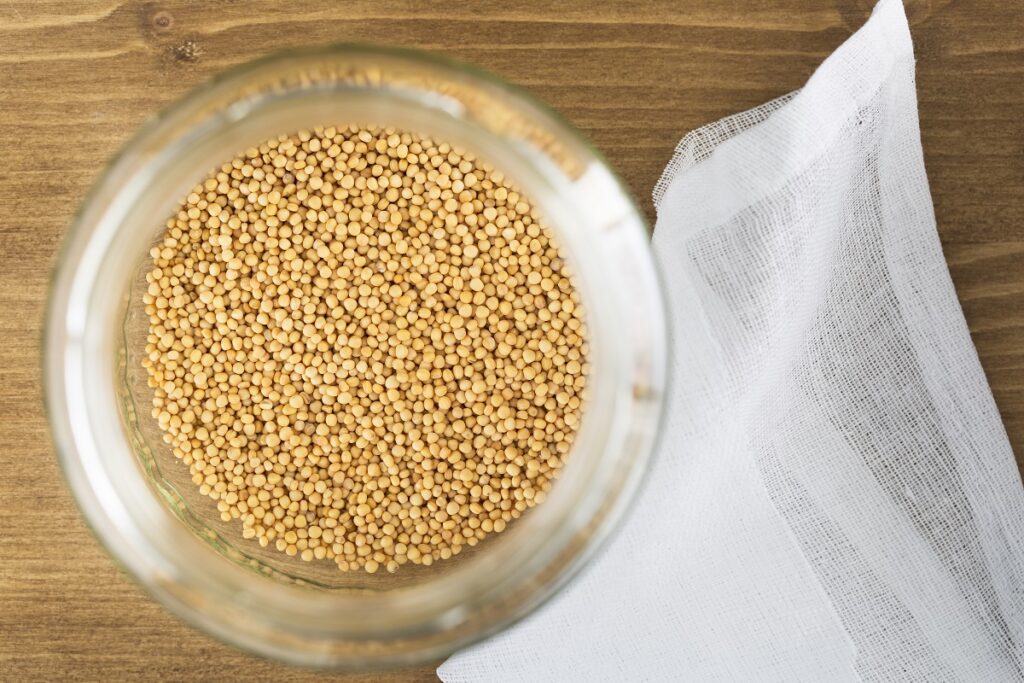
How to Use Mustard Seeds?
Mustard seed is more commonly found in Western cuisine as an ingredient in mustard, but it also figures highly in Indian cuisine. Black and brown mustard seed is typically used in recipes for its aroma, whereas white mustard seed is typically used for its flavor. Black mustard seeds have a more potent spicy flavor than white mustard seeds, which have a milder, yet more well-rounded flavor. Brown mustard seeds have a somewhat spicy flavor.
Making mustard is the most typical application for mustard seeds. Mustard is a condiment best paired with grilled meats, sausages, and corned beef, in sandwiches, or as a flavoring for dips. It comes in jars or squeeze bottles, with the most common being yellow mustard.
Yellow mustard perks up both sauces and dishes; the robust tangy sauce is a natural pairing for a salad dressing. Sausages go exceptionally well with mustards of any kind. Brown mustard seeds are typically used to make prepared English and French mustards, to which capers, white wine, and vinegar are also added.
Typically, brown mustard seeds have more heat than yellow mustard seeds. They are used in Asian cuisine to flavor and spice cooked foods— Those yellow packets you get with takeaway egg rolls are a type of Chinese fiery mustard. It also pairs well with fried wontons or spring rolls, or in cold appetizers like jellied meats and barbecue.
Not only are brown and white mustard seeds used to make mustard, but they are also a common component of pickled spices. Toasted white mustard seeds can be added to food or used in pickling. You can grind any type of mustard seeds to make DIY mustard.
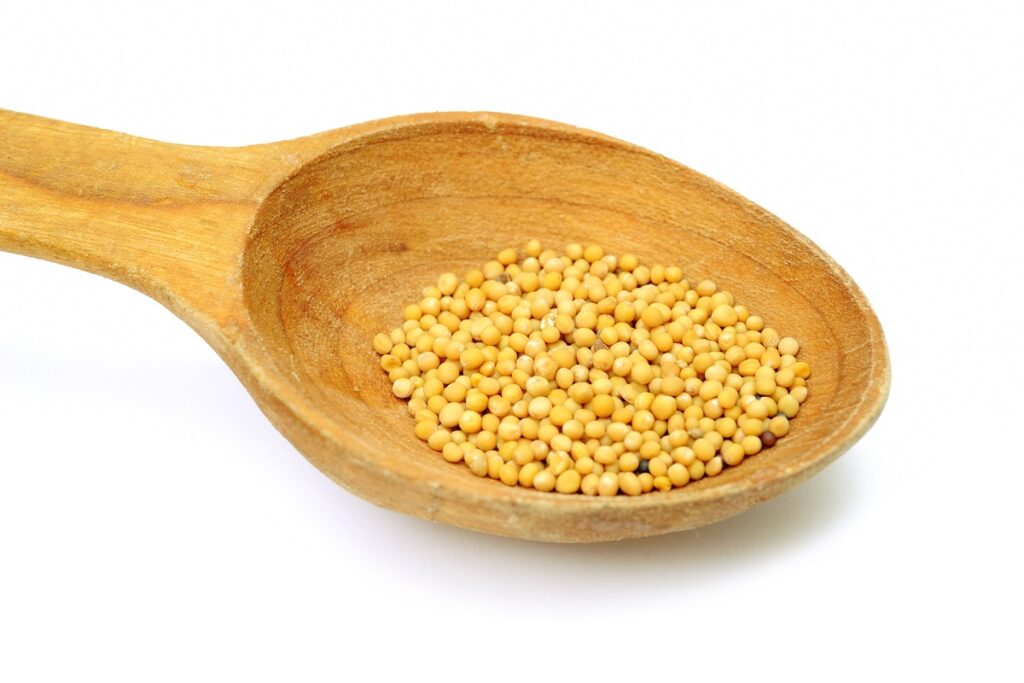
Black mustard seeds are a staple of Indian cuisine. They can often be found with other spices in dhals and curries. The seeds, which combine nicely with cumin, coriander, curry leaf, and fennel seeds, reveal their full power when fried in hot oil until they pop. They are frequently stir-fried whole with other aromatic ingredients before being added to a dish.
Like yellow mustard sauce in salmon, black mustard seeds are also essential ingredients in spicy Indian fish dishes, like jhaal and paturi. A variety of pickles consisting mainly of mangoes, red chili powder, and powdered mustard seed preserved in mustard oil are also popular.
There are a few things to consider if you want to try using mustard seeds in your cooking. To improve the flavor of the mustard seeds, remember to toast them before using them in a dish. Generally, opt for white or yellow mustard seeds for their well-rounded flavor.
If you must use black mustard seeds, use less of them and opt for young and ripe seeds so they’re easier to ground and impart better flavor. Here’s how to add mustard seeds to your cooking:
- To season Butternut Squash & Apples Chicken
- Dhal Tadka (without the hot pepper)
- Dairy-Free Baked Lamb Meatballs
- Sprout them and then add to a salad
- Use the ground seeds for a honey-mustard dipping sauce for chicken tenders
- Ground mustard is a superb addition to salad dressings like Maple Tahini Mustard Dressing
- Make an amped-up herby wholegrain mustard spread
- If you're making a low histamine dry spice rub, mustard seeds are a nice addition
- Homemade Mustard Toum

5 Best Mustard Seed Substitutes
If you’re looking for a mustard seed substitute, first look at other forms of the mustard plant as suitable stand-ins - prepared mustard, whole grain mustard, and dried mustard powder. Otherwise, try horseradish if you’re looking to replicate the strong pungent flavor of mustard seeds, or turmeric fi you’re after the tinge of yellow.
Prepared Mustard
Due to availability, prepared mustard is usually preferred over dry mustard in practically every recipe. In dishes requiring liquid, such as marinades, sauces, and stews, it functions flawlessly as a substitute for mustard seed. The majority of mustards, especially the traditional yellow, are milder than ground mustard, so a small modification is necessary to get the flavor you want.
One tablespoon of prepared mustard should be used in place of each teaspoon of mustard seeds called for in a recipe. Then, to account for the additional liquid in the substitution, eliminate one teaspoon of liquid from your recipe.
In most recipes, yellow, dijon, and brown will work just as well as the seeds. Taste the product as you go and make sure it's adequate before deciding how the flavor will blend with the other ingredients in the dish.
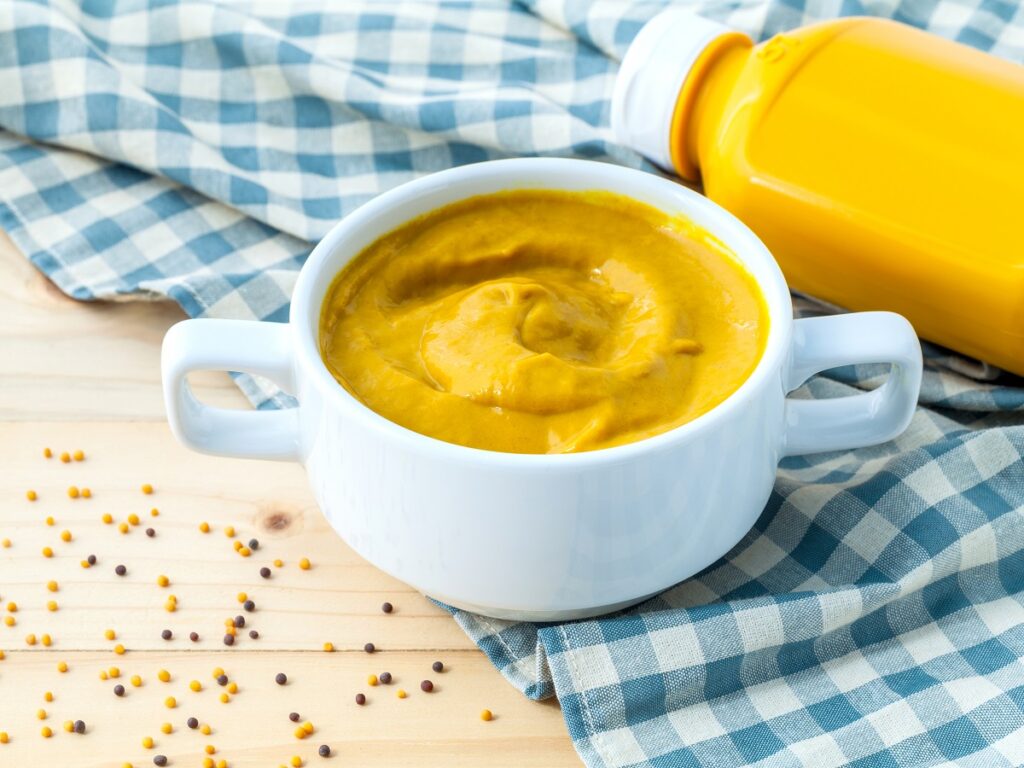
Mustard Powder
Ground mustard seeds are what’s used to create dry mustard, often known as mustard powder. This is a typical component in marinades, spice rubs, salad dressings, and savory foods. Its flavor profile is most similar to the delicate flavor of yellow mustard seeds, and it’s conveniently located in the spice section of major supermarkets.
Most people use ground mustard to give fatty comfort foods or meat dishes a bite and a hint of earthiness. In particular for dry rubs or when emulsifying things, use this mustard powder as a substitute for mustard seeds. Use it in a 1:1 ratio by weight, when replacing mustard seeds with mustard powder.
Whole Grain Mustard
Whole grain mustard is simply a mustard that has been soaked and ground to form a grainy paste. The grinning does not fully break down all the mustard seeds, however, creating a thick, coarse texture. Sometimes called grainy, stone-ground, or coarse-ground mustard, whole-grain mustard has a very strong flavor that’s often not to everyone’s taste.
When it comes to cooking, whole-grain mustard is used in a variety of ways due to its complex flavor profile and texture. It is used as a marinade for meat, like beef or chicken, or as a glaze for roasted meats or vegetables to give BBQ that added kick. Use this as a substitute for brown mustard seeds or black mustard seeds or when you need a medium to mild mustard flavor, at a 1:1 swap.

Prepared Horseradish
Prepared horseradish is made up of grated horseradish root, vinegar, and salt. Given that mustard and horseradish come from the same plant family, it makes sense that they can be used interchangeably. While their flavors are comparable, there’s still a great difference between them. Horseradish tends to be more potent than mustard seeds, so use less of it in your recipe and taste as you go.
Prepared horseradish is available in many grocery stores. Since prepared horseradish is also much spicier than mustard, use it in a 1:2 ratio and taste the mixture after adding half, to see whether you want more.
Turmeric
Turmeric is a good dry spice option to substitute for mustard seed. The most common mustard is a brightly-colored fine-ground mustard, a bright yellow color due to added turmeric, with a mild and slightly sour flavor.
This makes turmeric a possible stand-in for mustard seeds when all you need from the mustard seeds in your dish is a tinge of yellow. It does not add the same flavor or texture provided by mustard seeds, so only choose this option when that touch of yellow is needed.

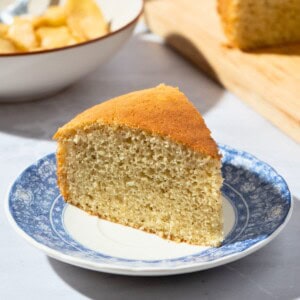











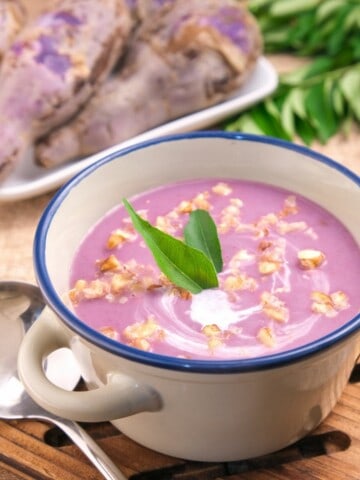
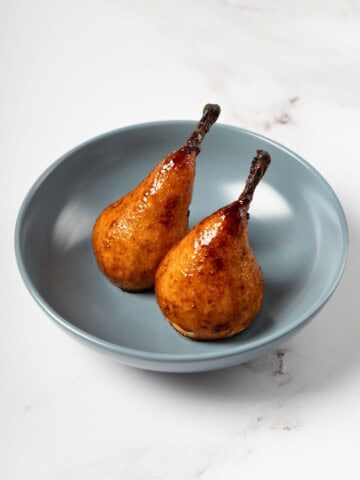
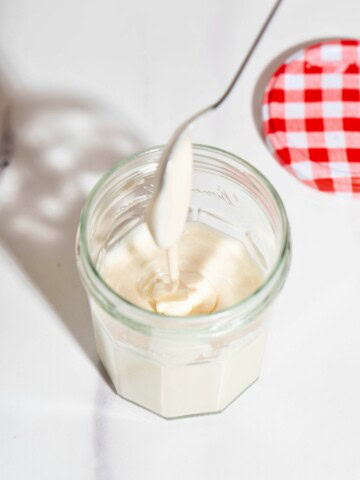
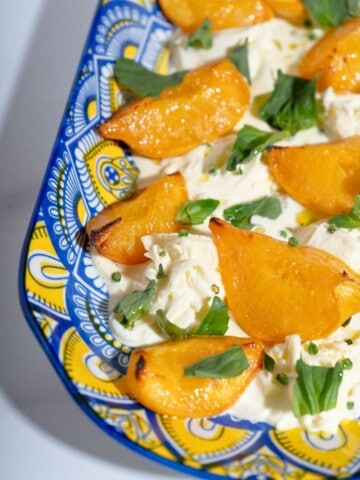
Comments
No Comments